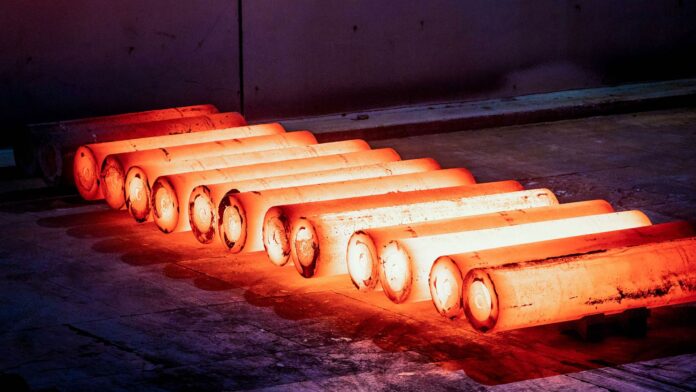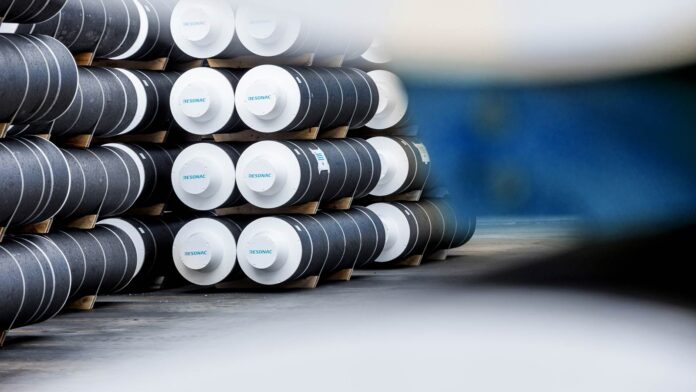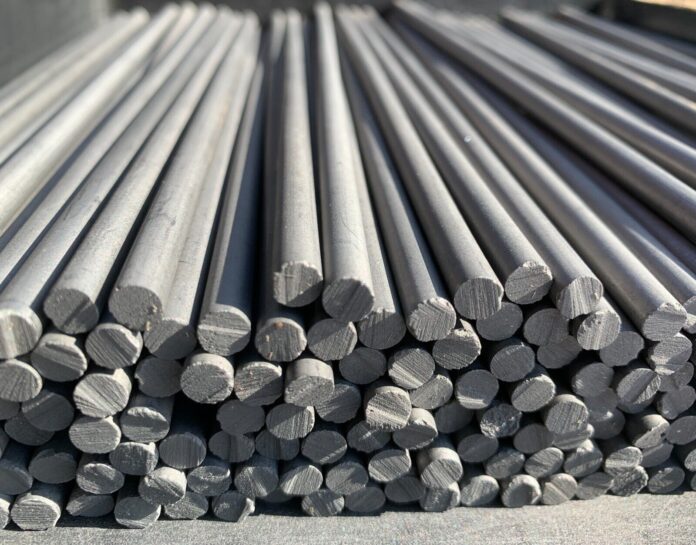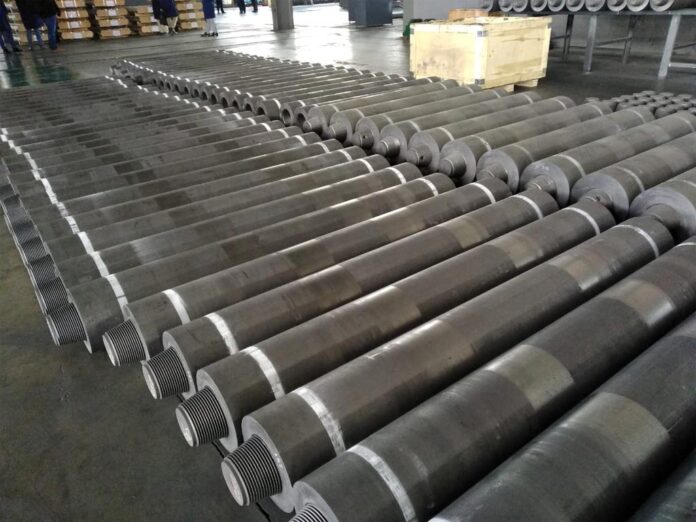Have you ever wondered how graphite electrodes enable electric arc furnaces to reach their extraordinary temperatures? You can discover the basic workings of graphite electrodes here. This article covers their construction, properties, and technical applications – understanding these fundamentals will help you get the most out of your industrial processes.
Introduction to Graphite Electrodes
Graphite electrodes are essential components of electric arc furnaces used for steelmaking and other applications, such as the production of non-ferrous metals. They consist of high-purity graphite, a conductor that employs a large electric current when heated to high temperatures. When powered by electrical currents, they provide intense heat to melt metals and other substances in the melting process.
They are manufactured in various sizes, ranging from small rectangular blocks up to very large cylindrical rods weighing several tones. The most common type is the ‘UHP’ (ultra-high power) graphite electrodes which make up their own unique product category due to their excellent properties.
Exploring the Features of Graphite Electrodes

Their unique combination of properties makes them ideal for use in such applications. Here are some of their key characteristics:
Heat Resistance – Graphite electrodes offer excellent temperature tolerance. They can withstand temperatures up to 3,460°F and provide excellent thermal shock resistance.
High Services Life – They last longer than many other types of materials, reducing maintenance time and costs associated with replacements or repairs.
High Conductivity – Graphite is highly efficient when it comes to electricity; its electrical resistance is much lower than other electrode materials, providing improved electrical efficiency to the furnace and producing better quality products.
Dimensional Stability – The relatively low coefficient of thermal expansion gives graphite electrodes good dimensional stability over a wide temperature range. This helps prevent them from expanding under thermal stress and cracking or breaking during operation.
Shock Resistant – Graphite has the ability to absorb mechanical shock without fracturing due to its unique system of microcrystalline structure throughout its layers that works as an energy dampener during process fluctuations in pressure or vibration.
Applications Fields
They are primarily used in electric arc furnace steel production and foundries, providing a source of heat to melt various types of scrap. As the electrode comes into contact with steel, it produces a considerable amount of energy which creates intense heat in the process. Graphite electrodes are also used in biomedical engineering, electrolytic cells, and electroplating applications.
The combination of highly purified graphite strands and metallic conducting elements makes it both electrically conductive and thermally stable at temperatures well beyond their melting points. This makes them ideal for use in high-temperature applications such as boiler tubes or electrical furnaces.
In addition to industrial uses, these special pieces of equipment can be used for welding purposes as well. Graphite electrodes offer excellent ion conduction properties that make them ideal for arc welding processes like shield metal arc welding (SMAW). With a similar design to other electrode types, such as tungsten or molybdenum-based components, the base current is generated through a reaction between two distinct materials within the electrode itself.
Types of Graphite Electrodes

When it comes to graphite electrodes, there are generally two types: regular and impregnated.
Regular ones are composed of a highly purified calcined petroleum needle coke and coal tar pitch that is formed into a rod shape. They are then graphitized under high temperature and pressure to give them the desired level of electrical conductivity.
Impregnated electrodes, on the other hand, feature an extra layer of material bonded to their surfaces. This additional layer helps to improve electrical conductivity as well as reduce material consumption in some cases, due to its increased density. Depending on the requirements, different additives can be used when impregnating the graphite electrode surface with additional material; usually, these additives can be found in ceramic compounds or mixed metallic oxides with organic binders such as paraffin waxes or polymers.
Manufacturing Process
It begins with the selection of raw materials such as petroleum cokes, coal tar pitches, and other fillers. From there, the raw material is agitated in an electrical furnace at temperatures up to 2500°C. This causes the raw material to react and form flakes composed of carbon and other elements.
These flakes are then cut into smaller particles called granules which are combined together with a binder in order to form an electrode paste. The ingredients contained within this paste depend upon customer specifications – a customer may require higher levels of certain additives such as silicone or acetylene black for certain properties and applications.
Once mixed together this paste is then pressed into molds which form the shape of a graphite electrode – typically it will range from 1” diameter up to 30” diameter depending on application needs.
After being molded into shape, they must be heated yet again – usually at temperatures above 3200°C this time – in order to become “baked” or stabilized; as they absorb more energy they become more resistant to thermal shrinkage while also having their physical properties further solidified. This baking process can take anywhere from six hours all the way up to ten days depending on size constraints.
Once cooled down again, electrodes are inspected using precise measurements against standards set forth throughout the industry and readied for shipment worldwide where they meet their customers’ needs for use in furnaces or other melting systems across many industries around the world!
Maintenance and Care

When not in use, the ends of the electrodes should be sealed using sealing compounds, which keep moisture out and protect them from environmental factors such as dust, dirt, or corrosive gases. Store them away from excessive heat sources and extreme temperatures as these can cause cracking, dimensional changes, or irreversible damage.
To ensure consistent quality performance it’s recommended that graphite electrodes are seasoned before first use. This process consists of a “burn-in” cycle in which the electrode is heated to oxidize any surface contaminants while taking careful note of arc voltages and other electrical characteristics to ensure optimal performance.
The Prospects of Graphite Electrodes in the Future
Research is being conducted into using 3D printing technology to create superior versions of these electrodes, as well as composites that allow for a creative combination of materials such as metals or ceramics that can be used for custom applications. Additionally, the possibility of synthetically manufactured graphite with desirable characteristics such as thermal stability and high electrical conductivity is also keeping researchers on their toes.
Summary
In conclusion, graphite electrodes are an essential component in the steelmaking process, providing a stable and reliable power source for electric arc furnaces. Their unique properties make them extremely versatile, allowing for greater control and precision over the steelmaking process. Understanding and properly utilizing graphite electrodes can help ensure optimal performance and maximum returns on a steelmaking operation.




